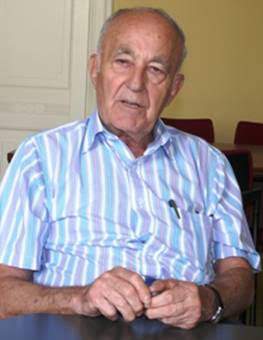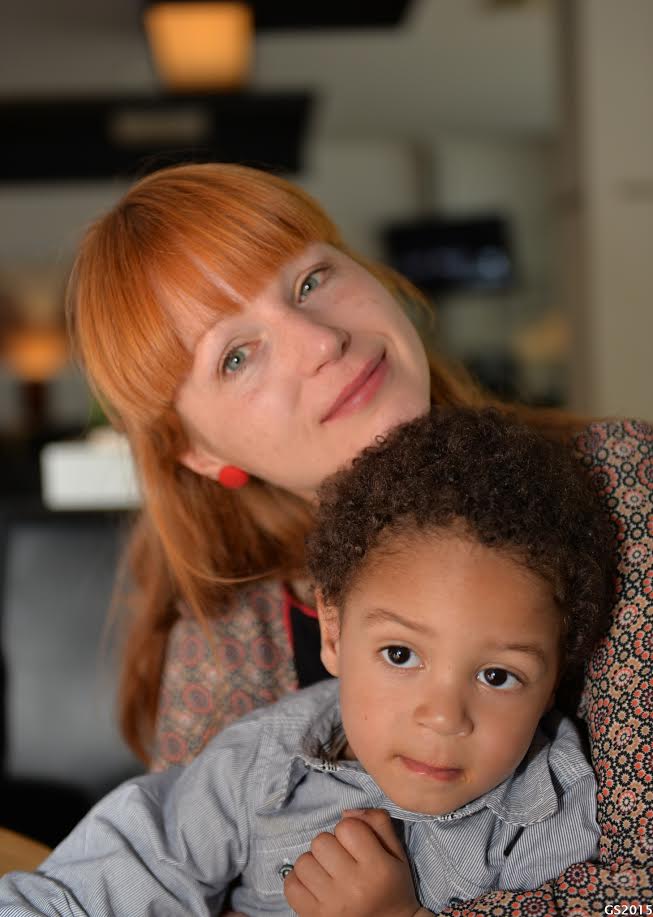
THE VOICE OF INTERNATIONAL LITHUANIA
|
VilNews has its own Google archive! Type a word in the above search box to find any article.
You can also follow us on Facebook. We have two different pages. Click to open and join.
|
Author Archive

The most famous Lithuanian SPA town – Druskininkai in Southern Lithuania, famous for its mineral water and remarkably nice environs, is only one of several SPA spots in this country! We invite you to indulge yourself in an outstanding exotic SPA treatments and dive into the sea of SPA pleasures. Massage masters will reveal you the ancient secrets of relaxation, while aromatic bathtubs and various baths will help you to regain your strengths after a hard working day. SPA treatments revive your skin, pamper your body and calm your spirit.
Druskininkai
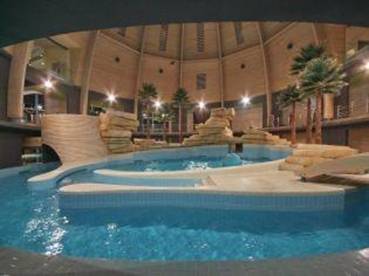
Druskininkai SPA
Druskininkai is a year-round international resort offering mineral bath, mud and climate therapies.
Mineral waters of different mineralization, similar to the well-known European mineral waters, and cure mud are found in the resort. Nature also endowed Druskininkai with mild climate, many lakes and beautiful parks and groves, where the guests can find their peace. Since 1794 the small town that has rapidly grown into an attractive tourist center offering all the benefits of a carefree and safe vacation.
Druskininkai offers a wide variety of health treatment services: herbal, bubble, honey and other baths, massages, krio- and magnet therapy, various health care, beauty and weight loss packages, etc.
Here are several worth-seeing sights: soviet sculptures museum “Gruto parkas”, woodcarvers’ parks, etc. Visit one of the largest Aqua-parks in Europe and 70-level adventure park ONE.
Birštonas
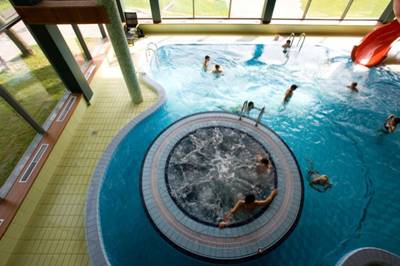
Tulpė Medical SPA in Birstonas
The resort of Birstonas was founded in 1846. At the turn of the 19th-20th centuries, the first patients not only from Lithuania but also from the major cities of Russia and Poland used to come to the sanatoriums that applied the mineral water and curative mud procedures. Birstonas has two perfect specialized rehabilitation sanatoriums for treatment and recreation that provide treatment for various illnesses by applying the latest methods as well mineral water and curative mud, where one can recover from the mental or physical fatigue as well. Another factor, which significantly attributes to the treatment quality and health recovery in Birstonas, is the air of this resort, surrounded by forests and the loops of the Nemunas river, which is especially mild and saturated with phytoncides and light negative ions having the effect of a huge inhalator on a human body.
The resort boasts beautiful environment: houses scattered among trees, elegant villas constructed in late 19th-20th centuries, the neo-Gothic church with its tower rising towards the sky, the buvette of mineral water, the monument to Vytautas the Great, the Hill of Songs, and artificial lakes. The resort town is surrounded by the scenery environs approached by a great many special roads and paths for pedestrians and cyclists, riders and horse-drawn carriages. The lovers of water entertainments are offered to rent a canoe at the Sport Centre and try the bends of the Nemunas. Impressive panoramas of nature open from the high banks of the Nemunas and hill-forts. The Bird Watching Site is established in the area of the Nemunas islands. But you can enjoy the most beautiful loops of the Nemunas only from an air balloon or a plane taking off from Pociūnai Airport. Birstonas is developing into a winter resort as well. The downhill skiing track is equipped here. One can also go skiing as well as ride on horse-driven sleigh through snow-covered forests.
The resort often hosts concerts, poetry evenings and sport events. Birstonas is a perfect place for conferences and seminars where the fatigue of intensive activities will be quickly removed with the help of relaxing procedures or spending free time in harmonious and pure nature. The biggest Lithuanian river, the Nemunas, which wings spectacularly in the middle of the country as it flows towards the sea, has formed three loops. The structure of the landscape of this region is one of the most peculiar in Lithuania. Birstonas, one of the most beautiful resorts of Lithuania, is situated in the south of the country.It has been famous for its curative waters, sanatoria and beautiful nature since the olden times. The Nemunas River surrounds the resort on all sides and forms a unique loop there.
- Bookmark :
- Digg
- del.icio.us
- Stumbleupon
- Redit it
100 years since M.K. Čiurlionis died
- Posted by - (4) Comment
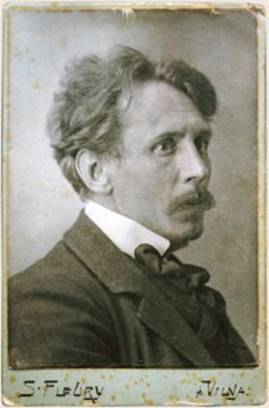
On the 10th of April it is 100 years since Lithuania’s national composer and painter, Mikalojus Konstantinas Čiurlionis (1875-1911), died. VilNews will on this occasion respect presents a series of articles about his life and works. We will also have a very personal talk with his great grandson, Rokas Zubovas, who has been following in his great-grandfather’s musical footsteps.
On the 10th of April it is 100 years since Lithuania's national composer and painter, Mikalojus Konstantinas Čiurlionis (1875-1911), died. VilNews will on this occasion respect presents a series of articles about his life and works. We will also have a very personal talk with his great grandson, Rokas Zubovas, who has been following in his great-grandfather's musical footsteps...
Lithuanian artist and composer Mikalojus Konstantinas Čiurlionis (1875-1911), a unique figure in the history of European arts, has left a profound imprint on Lithuanian culture.
Judging by the breath of his artistic activities and diverse interests, Čiurlionis can be seen as a truly Renaissance individual. Over a short, mere decade-long career, he composed nearly four hundredmusical compositions, including two large-scale symphonic poems, an overture, two piano sonatas, a string quartet, and a cantata for chorus and orchestra. During those same brief years he also created approximately four hundred paintings and etchings, as well as several literary works and poems, while still finding time to experiment with art photography. Notes from his study years at the Warsaw Institute of Music show his interest in geology and history, chemistry and geometry, physics and astronomy, astrology and ancient mythology, dead and modern languages, philosophical ideas of antiquity and modernity, eastern and western religions.
On the other hand, his active involvement in the Lithuanian national movement and his idealist self-sacrifice for the sake of artistic ideals show him as a typical artist of the Romantic mold. During his short life, Čiurlionis managed to be at the heart of the creation of the Lithuanian Artists Union and actively organized and participated in the first three exhibitions of Lithuanian artists, organized and directed Lithuanian Choruses in Warsaw, Vilnius, and St. Petersburg, and was the first Lithuanian professional composer not only to take interest in Lithuanian folk songs, but to collect and publish them. His passionate approach to life is perhaps best summarized by his refusal to accept an offered safe teaching position at the Warsaw Institute of Music, and his declaration in a letter to his brother that he intends “to dedicate to Lithuania” all of his “past and future works.”
In addition, in following the German Symbolists in his paintings, exploring synaesthetic ideas, fashionable at the time, and exploring chromatic and harmonic possibilities of the tonal major-minor system in his music compositions, Čiurlionis stands as typical artist of the late Nineteenth-early Twentieth century Europe.
Finally, his latest mature paintings, based on intricate musical compositional techniques, and piano compositions in which tonal writing is blended with proto-serial techniques and constructive use of short rhythmic, melodic and harmonic complexes, stand as examples of totally unprecedented plastic-aural experiences unique in the history of European art.
- Bookmark :
- Digg
- del.icio.us
- Stumbleupon
- Redit it
- Posted by - (1) Comment
M. K. Čiurlionis great grandson, Rokas Zubovas:
Music of Čiurlionis makes you grow
Text: Indre Lauciute

Rokas Zubovas. A world famous pianist.
2011 is a special year with regards to the famous Lithuanian national composer, artist and cultural activist Mikalojus Konstantinas Čiurlionis. He died exactly 100 years ago. In April.
Naturally, this year is extraordinary special to his great-grandson, the world famous Lithuanian piano player, Rokas Zubovas.
We met Rokas, and simply asked him: Why? What is so catchy and special about the music of your great grandfather that you can’t tear yourself off from spending almost every day with him and his art, as well as the memory of him, continuously studying and playing his music?
Rokas Zubovas;
“Last year I spent much more time with M.K. Ciurlionis’ music than ever before. All these tasks regarding Ciurlionis music I used to do before fade compared to the tasks I accomplished in 2010. In order to record seven hours of live music, one has to spend 8-9 hours every day continuously playing his notes. Of course, going so deep into his music I’ve discovered new experiences and grasped fresh ideas. Just imagine you’re holding the notes and feeling them not just intellectually, theoretically, but also physically at the same time. Such immersion into his music gave me something that I can’t even describe and express in words yet, but the thing I’m sure about is that I’ve changed and I am different now.”
“Last year was extraordinary because of trying to concentrate on one subject. The last time I had such an experience was 20 years ago, when I was studying in the United States; then I had to choose and determine my priorities. At that time I experienced that when you concentrate on the most important things in your life, you realize you’ve been surrounded by so many worthless things, although they seemed to be so important and amusing. And then you get surprised - you just don’t miss them at all.”
“I could describe the year 2010 using one phrase I heard from a priest in a church a few years ago: “Christmas comes to everyone in a very different time and separate.” This means, that the miracle of Christmas is very autonomic and personal. The last year I could call as my time for Christmas. I understood and discovered many things that I couldn’t before. By living with Ciurlionis music and playing his notes I achieved a better understanding of why did he write the music the way he did. When I hold the notes of such a composer, the feeling of the music is somehow more sensitive.”
I think one could be jealous of such a Christmas. I didn’t find my Christmas yet. It seems that last year was really remarkable for you. What other discoveries did you make in 2010?
“One of the precious and important things that I found for myself is the polyphonic music of Ciurlionis. It explains his late music really well or reveals why and what he was seeking in his studies.”
Another area that I didn’t pay enough of attention to - all his study is about the grey hour. I think it’s a subject that most of us never think about or at least didn’t ever before. One hundred years ago when there was no electricity yet, people used to outlive the dusk hour specifically. I mean the time when there’s no daylight anymore, but it’s still not dark enough to light oil lamps. That hour was perceived as the time for concentration, visions, recollections, dreams and stories. This period of the time is special, because you can’t trust your eyes - you can’t see the real objects anymore, just the shapes and shadows. Maybe that’s the source and the reason, why the reincarnation theme is so strong in the music and paintings of Ciurlionis. Those shapes just disappear in his music.”
“In addition, one of the most important goals that I achieved last year is that I’ve already launched a website about Ciurlionis. I already received some letters from the Netherlands, England and Japan, concerning the same question: where to get the notes of Ciurlionis? I’m delighted that there are more and more people who are searching for Ciurlionis and now they have this point where they can get it - the website”.

Čiurlionis and Sofija Kymantaitė-Čiurlionienė in 1908
Preparing for our interview I found out that Ciurlionis is popular even on social networking pages, such as facebook. In specialized pages for classical music and forums, people are discussing about his music and asking each other “who is he?”
“One year ago I had a dream. I want, that one day a man would wake up in Kenya and find out that 2011 is 100th anniversary of the death of M.K.Ciurlionis; one could google about it easily and find representative information concerning all one’s questions on the website I’ve launched. I’ve experienced that it is possible to find some letters or information about paintings of Ciurlionis in libraries and museums, but sadly not the music. It seems that music is such a peculiar area which exists only when it is being played.”
“Besides, I was shocked. Ciurlionis is such a big figure for all our history of music and has been dead for one hundred year already, but we still haven’t recorded all his music. That was also one of the reasons why I decided to take this big mission - to record all his notes. Everything is already done, and my goal is to send two DVD copies to city libraries, gymnasiums, music schools and schools of higher education.”
I’ve heard that the state of Lithuania doesn’t support your project the way it should. Does it mean that your work is considered to be as an underground activity?
“Recording Ciurlionis’ music is a must do thing. I remember the famous phrase of John F. Kennedy: “Don’t ask what your country can do for you. Ask instead what you can do for your country.” I like this phrase, but I still see one objection in it. It’s implying that a man has to do something for his state. I think that a state, Lithuania, is what we are. I am of the same importance as a prime minister of Lithuania, or some other famous and important politician. Why should I let, that the face of Lithuania would be built just by them? I am equal with the minister or any other Lithuanian you could meet on the street. Lithuania is not just somebody alone, it’s all the people. That’s why I don’t consider that the things I do are just for Lithuania. I think that Lithuania is doing this.”
“Despite daily topics about the lack of money, I think that every project could be started with saying: “There’s no money”. If we always give everything to the hands of money, then we just kill a human in ourselves. We give up ourselves to money because we think it is ruling everything. It doesn’t. It’s just us. There are so many people that live without being controlled by money. Let’s follow them.”

This year is special. What are the special events that will make people be interested in Ciurlionis?
“There are many events planned. It is really sad that the national program of Ciurlionis is structured not in the way I would be satisfied – money is given to the more bureaucratic things, but anyway, that’s the way it is.”
“Art is alive just when it is relevant. It has to influence people - otherwise it doesn’t exist. I’m very happy, that in Lombardia, in Italy there is an exhibition of Ciurlionis displayed at the moment. And approximately 10,000 children will have the possibility to participate in the project called “Ciurlioniada”. That’s a big investment in the future because a lot of children will know about Ciurlionis. That is informal learning and it doesn’t matter if a kid won’t remember the name of Lithuanian artists anymore but still, he would already have been trying to copy an angel from his paintings or a zodiac sign. They will have some understanding. That’s impressive. I would be very happy if Lithuanian children would have such a possibility - to touch the sense of Ciurlionis art.”
“Nevertheless, I’m very happy, because this year there will be two different exhibitions of Ciurlionis displayed in Vilnius - one in spring, and the other one in autumn. The first one will be devoted for sensational experiencing of Ciurlionis music and the second one - for musicology subjects. These conferences are going to last four days and attract many guests from all over the world.”
“One of the biggest accents I’m excited about is the conference in Finland in winter. This conference is organized by the Finnish Musician’s Union and is the biggest annual event for all the Finnish musicologists attending the symposium. One evening is devoted to Ciurlionis, and I think that’s the best way to spread the information that we could dream about. Imagine that suddenly the whole Finnish musicology community will be touched with a tiny colour of Ciurlionis and people will become aware that he exists at all. They are precisely the people who can carry the message about his music. But why don’t we do this? Why don’t we look for the ways the message about Ciurlionis could spread as a water-colour painting.”
Are you the only pioneer, initiator doing something about the works of Ciurlionis?
“There are more people doing something about it. Lately I’ve been talking to the students of the music academy, who want to make a music festival in Druskininkai this summer. There would be three colossal scenes with different kinds of music, such as jazz, classics and alternative music. There would also be an area for tents and paintings of Ciurlionis would be exhibited under the night sky by using lasers and there would be a direct broadcast on facebook and youtube. These are a few of the many amazing youthful ideas that could attract other young people to the knowledge of Ciurlionis. I hope it will work. It would be a great accent on Ciurlionis for this year.”
“There will be more and more people doing something related to Ciurlionis. I have no doubt because there are people who love Ciurlionis music. We just need ideas (not money) to start doing something. Nowadays we understand art differently. When we adapt Ciurlionis music to the changing world, a man can hear that the melodies are acceptable and touching. That’s why they adapt so easily. As I’ve mentioned already, the art of Ciurlionis is catchy. Usually, if someone hears and experiences the art of Ciurlionis, he stays connected with it. For this reason the sound of Ciurlionis spreads in the world. It seems, that there’s love shining from the inside of his art, and it spreads.”
How long have you lived with the music of Ciurlionis?
“It all started in my childhood, of course. When I was accepted to the music school of “Naujalis” in Kaunas, it was somehow always natural to think, that if there’s a need to play Ciurlionis, me as a great-grandson, would the best fit. So I got used to being related with the name of Ciurlionis since my primary classes. I don’t even remember what I used to play but obviously, it was already Ciurlionis. As I remember, even the first big concerts of mine were also shaped by Ciurlionis music. To sum up, it would be almost 35 years.”
“Almost all the time I used to have an internal prejudice that to some extent, I am as an advocate of him. I used to feel that everyone expects me to be the one who has to carry the message about Ciurlionis. That is my mission. I used to ignore it.”
“But once, when I was playing in United States, a perception came. I understood, that being a part of Ciurlionis, I should accept it as a blessing and it’s a gift to have the possibility to touch his notes and share them with others. I realized that his music is so great that I could exist or not but still his music would exist hundreds of years after my death. And if I touch it and spread it, it’s just a blessing for me and I should just embrace and appreciate it. I take it as a present to myself and every time I’m affected by his music I find something special for myself to grow.”
“True art can be the one that doesn’t have neither the bottom nor the top. If the painting is good, then every time you look at it you can find something different. It’s the same with a good movie or a book. But nowadays we have this fast food industry. If you ate a hamburger, you know that you can get the same later. There’s just massive production which is the same. Ciurlionis was living in that time and culture that is inexhaustible.”

M.K. Ciurlionis - Lightning Flashes
Could you be called as a missioner who’s like Prometheus carrying the torch?
“I don’t consider myself to be like this. Some people say that if I’ve recorded Ciurlionis music, then there’s no use to do that anymore for at least a few decades. No. The more interpretations of Ciurlionis, the better to the music. The music of Beethoven exists not because everyone plays it in the same manner but because of different variations and interpretations. When everyone plays it in different ways, then appears a line that combines everything into one. Tradition doesn’t occur out of one thing, tradition is born out of what is different. Among these different options you can find one common denominator that unites them all. There always has to be a dominator. To copy and to be the same is just boring and I don’t see any sense in it. That’s why I encourage to play Ciurlionis music and to interpret it in freestyle. I’m not perfect. No one is. I just do it the way I can.”
“Let’s allow Ciurlionis to be played in the manner of jazz, pop way of music or to be transformed into something different. Why not? When people will see him in this manner then they will try to find who he really is and will come to his music. And these people will be the ones who makes him famous.”
“Everyone has this basic thought that Ciurlionis is something “good”. Heritage, in other words. It’s kind of a basic thinking that you’ve learned at school and don’t analyze anymore. When we place something into a box then it’s already conserved and no one is touching that unless to clean the dust. The thing is that music is alive just when you hear it, not when it’s placed on some shelf. No one is interested in old authentic music from old, let’s say 1936, because for us it’s too boring. We have to transcribe it and adapt it the way we could understand it and to make it relevant. The same with Ciurlionis. We have to clean the dust and take care about his music but at the same time adapt it to our ears.”

How big is the difference between understanding the music of Ciurlionis and the nowadays lives we’re living?
“Ciurlionis was living in at time when art had the function that’s already forgotten. The art was as a medium among the human and all these mysterious unintelligible phenomenons - the nature and the human. I’m absolutely convinced that art appeared as an explanation of the things that we can’t understand by mind. When we don’t find the way how to make an explanation for anything, then we create our own explanation system through the paintings, music or mythology. It explains to us how we should live and why the things are the way they are. We don’t understand but we don’t need to, we feel. It’s the same about the music. The role of it is to explain our feelings. When you dive in and loose yourself in music then you feel how the world of your emotions becomes pure. But why? Because of the harmony you get. We don’t think about our world of emotions too much but with music we’re able to harmonize it end then continue living. When Ciurlionis was still alive, this role of the music was still important and the artists used to create trying to create a model to explain the world.”
What has changed nowadays?
“Well, partially I think it’s our fault. We don’t believe in such anymore.”
Why so?
“I think today’s artists do not believe they are creating some kind of explanation of the world or creating some model for it. Still there’re many artists who believe in it but most of the artists don’t even come to such idea.”
So why do they create then?
“The phenomenon of 20th century is originality. Ancient art existed through copying. The position of the artist in the 19th century was like this: if you want to become a painter, first year don’t use paper, viper or anything because anyway, you won’t create anything valuable. It would be just a waist of expensive material. Just refine your arm. You do this, then find out the artist you admire the most and start copying him. Do this till you’re able to copy him perfectly. When you already reach this level, when you’ll be able to make the ideal copy, then you’ll understand what is wrong in his painting. You’ll experience who you are. When you’ll see this disagreement among you and your beloved artist, you’ll find out that this disagreement is you.”
„Nowadays this way of thinking has lost its sense. Quite often I see so many artists that try to make an impression by any means, anyhow. The goal is to make an impression to as many people as possible and after on everyone forgets it. No one cares about it anymore but does this impression explain anything and is there any deeper meaning? There’s nothing. Just a façade”.
“Let’s remember such a phenomenon as cinema. Almost 30 years ago such directors as I.Bergman, R.Fellini or W.Allen used to figure on the covers of magazines and newspapers. They were representing the time, it was pulsing. Nowadays the cinema revolves around the question of how much money did this or that movie earn and for sure you always have suggestions, which is the most expensive and that’s why it’s worth seeing. What does it have to deal with the harmony or the art I’m talking about? Nothing. Everything is just a façade.”
“When we pass from sensuous things to sensual things, then the art stops it’s function. We want to sell ourselves for a high price but you can just see that people come to the concerts with empty eyes and leave like this. Just made one more tic in their “to do list”. “
“We could say that’s because of the market. That’s the reason why we act like this. But no, still every person wares its soul and cares around his sacred mark and where to fulfill it. And finds it. Art is used to be considered as a source of satiation. But art is not like this anymore. People discover other sources for that: a small kitty, taking care of the children, flowers, practicing yoga. There happens that somehow these small things appear that satiates a man and there’s always be the desire of fullness. As long as we are humans, the desire will last.”

- Bookmark :
- Digg
- del.icio.us
- Stumbleupon
- Redit it
Meet the wall at Literatų gatvė
- Posted by - (0) Comment
Text: Giedrė Avard

You leave Vilnius Old Town’s main street – Pilies g. – and after only 50 m you meet this wall at Literatu street,
full of artworks dedicated to some of the greatest writers of Lithuanian past and present.
Once upon a time in the old town of Vilnius, in the winding street that has got its name to honour masters of letters, a beautiful idea was realized. „Literatai“ (eng- litterateur) street has a rich and long history which begins at the times no-one can remember and is being continued by art projects on the street walls. You can find more than hundred peaces of art works created to remember poets, essayists and different types of writers related to Lithuanian cultural heritage of literature. Various weatherproof techniques have been used to make the artworks; some pieces are made of ceramics, others are sculptures made of glass and other materials, whereas some pieces are painted straight on the wall.Already from some distance you start seeing differently sized and colored shape artworks, and when you get closer you will see that each appear to be a characterful peace of ar. It may bring you into the wonderful stories behind if you care to take your time and observe at least some, which you find most interesting. On the other hand, being on a distance gives you a moment to notice a composition, which may be an interesting experience as a new creation – the whole wall it self.

Wall fragment.

Dedication to Arvydas Ambrasas, by Greta Medelytė.

Dedication to CASTOR & POLLUX by "SINTEZIJA"

Dedications to Rimas Burokas (11) and Tomas Čepaitis (12) made by Birutė Zokaitytė.
The project is successfully growing and spreading on the wall. More and more art peaces are being installed into the walls at the street every year since 2008. As the manager Eglė Vertelkaitė says, „there is a vision to create a „Literatų“ street embassy, where you can develop Lithuanian culture, share experiencea and be an integreted part of it.“
More pictures and more to read about the project at www.literatugatve.lt
- Bookmark :
- Digg
- del.icio.us
- Stumbleupon
- Redit it
The unorthodox music professor
- Posted by - (0) Comment

Text: Aage Myhre
Here he is, the professor who is conducting music and music festivals more energetically than anybody else, and who treats the very term music in an anything but traditional manner, for example when he conducts an acrobatic plane, doing its loops according to Bach’s “Ave Maria”, or when he conducts a complete “orchestra” of bulldozers and excavators.
- Bulldozer conduction is very sexual, says the professor, gesticulating and emphasizing the importance of his words, in his so typical manner - full of humor, intensity and warm enthusiasm.

Donatas Katkus was born in Kaunas 68 years ago, where his mother, an amateur actress, raised him alone. The professor was the outcome of a hectic love affair, and he never met his own father.
-But, says the professor, I do not complain, because I am a very young and very nice man, and I am just happy my mother did not take the veil in a Belgian nunnery, as she planned to do before the war started.
|
“The cultural life in Vilnius is in fact so attractive and extensive that there is no need to go anywhere else. You are never alone in Vilnius!” |
Life is easy
Professor Katkus is widely known for his excellent mood. The laughter and the good story is never far away, always told with great immersion and sometimes also with aloud gesticulation in order to make himself fully understood, like when he told me about the concert, where he conducted a small plane to make its loops to the music of “Ave Maria”.
Everybody in the restaurant stopped talking when the professor started his demonstration of how this event had been performed, using his arms to follow the loops, and his voice to indicate how the plane engine had been increasing its number of revolutions on its way up to highest octaves, into a decrescendo of sound and movement when the plane turned its nose down again.
- I am an actor by nature, and I do not take life too seriously, says the professor.
Forest brothers
But life was not always easy for Donatas Katkus. He can still well remember the summer day in his mother’s native village in the year 1949, when KGB suddenly appeared with a young, white-shirted man they had arrested. After one hour they re-appeared, and then the young forest brother’s shirt was totally soaked with blood. They would put the dead body of forest brothers at show for two weeks in the center of the village square in order to observe the reactions of the people watching the gruesome show so they could find out the relatives of the diseased and to demonstrate how dangerous it was to fight for the freedom of our country, says the professor with a sad glance.
Family in Siberia
- Many from the family of my wife were deported to Vorkuta and the Siberian tundra, and I know stories of how they had to build their houses from frozen human bodies because no other building materials were available.
- But I know that they had their music, and I tend to think that the Lithuanian folk songs very much contributed to their survival, he tells, and the eyes of the professor start shining again.
Fear is terrible
- How was it to work during the Soviet period?
- Well, for people like me, working with culture, it was not too bad. But it was terrible always to feel fear, always having to look back over the shoulder in case somebody should be listening. Vilnius was a true province during those years, as everything international was supposed to take place in Moscow, and only at the end of the period it was possible to get impulses through Warsaw and later also directly from the West. My personal “breakthrough” came when I, as a young man, was chosen to participate in a competition in the Belgian city of Liege, where our Vilnius String Quartette won the first price.
One of the greatest achievements of Professor Katkus was to start and develop the Vilnius String Quartet, where he played his main instrument, the viola. – I have been playing in the quartet for 29 years, and it is still doing well today, so I am rather proud of that, he says.
St. Christopher
The St. Christopher has come to play the main role in the life of Professor Katkus, first when in 1994 he founded the St. Christopher Chamber Orchestra, and in 1995 when he started the now so famous St. Christopher Summer Festival, which also this year was very successfully concluded, with its 36 concerts in different Vilnius venues during the months of July and August.
The saint’s name derives from a 3rd century legend, and the name means “Christ-bearer”. St. Christopher is the patron Saint of Vilnius and is featured on the coat of arms of the city. Due to the old legend, St. Christopher has become the saint of people who carry certain loads on their shoulders. The name seems to fit for the professor…
Money is crazy
Professor Katkus admits that it has been a very hard job to collect all the money needed for his summer festival. – This year, for example, he says, when it was only one week till the opening, I was still lacking 70,000 litas.
- But you did not get a heart attach?
- Look, I get several heart attacks in every festival, but do the festivals become inferior because of this? It’s so crazy always to have to think about money, which in fact is SOOO small a part of reality, so I prefer to remain happy whatever happens!
Advice to foreigners
- What is your advice to foreigners living in or visiting Vilnius?
- My advice is to take advantage of the fantastic musical life we have here in this rather small city, including two symphony orchestras, two chamber orchestras, two string quartets and a Music Academy with concerts almost every day! Both our Opera and our National Philharmonic are of fantastic level, and there are also a number of good pop and jazz concerts around in town. The cultural life in Vilnius is in fact so attractive and extensive that there is no need to go anywhere else. You are never alone in Vilnius!
Especially when the St. Christopher Summer Festival is in full swing in July and August.

- Bookmark :
- Digg
- del.icio.us
- Stumbleupon
- Redit it
|
|
|
Since the 14th Century two Turkish nationalities – Tatars and Karaims – have been living in Lithuania. From linguistic and ethno genetic points of view they belong to the oldest Turkish tribes - Kipchaks. This ethnonym (Kipchak) for the first time was mentioned in historical chronicles of Central Asia in the 1st millennium BC. Anthropologically ancient Kipchaks were very close to Siberia inhabitants Dinlins, who lived on both sides of the Sajan Mountains in Tuva and the northern part of Gob. In 5th century BC Kipchaks lived in the West of Mongolia, in 3rd century BC they were conquered by Huns. Since the 6 - 8 centuries, when the first nomadic Turkish empires were founded, the Kipchak’s fate is closely connected with the history and migration of the Middle Asia tribes. In Turkish literature they are known as Kipchaks. The history of Karaims is connected with Lithuania since 1397-1398. According to the tradition, The Great Duke of Lithuania Vytautas, after one of the marches to the Golden Horde steppes, had to bring from the Crimea several hundred Karaims and settle them in the Great Duchy of Lithuania. Transference of several hundred Karaim families and several thousand Tatars was not done once. It was in connection with the state policy of The Great Duchy to inhabit the empty areas, build towns and castles and to develop trade and economic life. Initially, Karaims were settled in Trakai between the two castles of The Great Duke, present Karaim Street. Later they were found living in Biržai, Naujamiestis, Pasvalys and Panevėžys. However, Trakai has always been the community's administrative and spiritual centre for Karaims in Lithuania, nowadays more and more also for Karaims throughout the world.
- Bookmark :
- Digg
- del.icio.us
- Stumbleupon
- Redit it
The exceptional relationship between Italy and Lithuania, which was especially evident for the period of 1300 – 1800, will never come back, but will always remain as a remarkable memory, and leave its unique hallmarks in and on Lithuania forever.


It is a myth that Rome and Vilnius both were established by wolves. But it is no myth that the Italians have put an
indelible mark on Lithuania, and when Gediminas, the Grand Duke of Lithuania, in 1323 decided to put down
roots in what is now Vilnius city, a Franciscan monastery was already in place – at the foot of Castle Hill where the Cathedral today is located. Since then, for hundreds of years, the spirit of Rome and Italy played a main role in the development of Vilnius and to a certain degree also of Lithuania.
No wonder that Vilnius sometimes is referred to as “the world’s most Italian city outside Italy”.
1300 – 1400:
The Grand Duke writes to the Pope
* Italy was involved in and with Vilnius already from its very first days as a capital city. Even the name Vilnius was used for the first time when Grand Duke Gediminas in 1323 – the same year he founded the city - wrote to Pope John XXII asking for support in Christianizing the Grand Duchy of Lithuania, by then one of Europe’s leading nations.


Grand Duke Gediminas and Pope John XXII
* Gediminas invited merchants, craftsmen, bankers, farmers, and soldiers to come to the new capital, guaranteeing all freedom of beliefs and good working conditions. Vilnius became thereafter truly international, though not with much of German or Scandinavian influence, as one could expect, rather influenced by Rome – greatly different from the other two Baltic capitals.
* Early examples of Italian influence within architecture, where at least some fragments of heavy, massive walls and other elements, typical for the early Gothic period, still do exist in some Vilnius churches, among them the Cathedral, the Church of Assumption (Traku 9) and the Church of Resurrection (Didzioji 17).
* And, there is one church you really should visit if you would like to smell the 700 years of Italian influence on Lithuanian history. That is the St. Nicholas Church (Sv. Mikalojaus 4). This tiny little church was originally erected around 1320, and remains the oldest Gothic building in town, though with several changes over the centuries. But a true beauty!

St. Nicholas Church, Vilnius
1400 – 1500:
Prince Casimir, Patron Saint of Lithuania, educated by Italians
* Young Prince Casimir (1458 – 1484) was supposed to be a Grand Duke, and also to ascend the throne of Hungary, but chose a spiritual life instead. He died of tuberculosis at an age of 25, and his remains (today resting in the Vilnius Cathedral) quickly won fame for miracles, so already in 1521, Casimir was elevated to sainthood, and canonized by Pope Leo X. He is considered the patron saint of Lithuania and Poland. The cult of St. Casimir has left a deep mark in the history and art of Lithuania. And, of course, one of Casimir’s main teachers was Italian, the humanist Callimachus Buonacorsi, who described Casimir as a “holy youth”, and also wrote; “He should either never have been born or should have abided with us forever”.
* This was also the century when, according to the Polish historian Jan Dlugos, the legends about Lithuanian’s similarities with the ancient Romans arose – also stating that the name Lithuania derived from “l’Italia.”
* By the end of the 14th Century, the fusion of Italian and Northern European art had lead to the development of an International Gothic Style (the first Gothic style originated already around 1150, at the fall of the Roman Empire). Leading architects and artists travelled all over Europe, and also Lithuania got its part of this new Gothic wave by the end of the 15th Century, today first of all symbolized by the probably most famous structure in Vilnius, the Church of St. Anne (below) – a masterpiece nearly unsurpassed in the world - and the connected Church of St. Francis and St. Bernadine – built by Bernadine monks who arrived in Vilnius by the middle of the century.

St. Anne Church, Vilnius
1500 – 1600:
Vilnius becomes a Renaissance capital, competing with Florence
* Throughout the Renaissance, when Italy was a trading centre and a melting pot for the world’s greatest civilisations, Vilnius also became a Renaissance centre, competing with Florence and Milan. The two great nations merged when Grand Duke Sigismund the Old (1467-1548) married the Princess of the Italian cities Bari and Milan, Bona Sforza, and returned to reign in and from Vilnius as the capital of the Grand Duchy of Lithuania. They created an Italian community within the court and, under the influence of the new Grand Duchess, Italian culture became the preoccupation of the city’s elite; macheroni, skryliai, and even the confection marcipanus became staples among the cogniscenti; and life at court became a series of cultural events, with rich noblemen competing for extravagance.
* During the rule of Sigismund the Old The Royal Palace in Vilnius was greatly expanded, to meet the new needs of the Grand Duke – a new wing was added, as well as a third floor; the gardens were also extended. The palace reconstruction plan was probably prepared by Italian architect Bartolomeo Berrecci d Pontassieve, who also designed several projects in the Kingdom of Poland.
It was in his Vilnius palace that Sigismund the Old welcomed an emissary from the Holy Roman Empire, who came to introduce Sigismund to Bona Sforza, his second wife, in 1517.
* The education of the royal couple’s son, the later Grand Duke Sigismund August (1520-1572), was the responsibility of a Sicilian, Jonas Silvijus Amatas, between 1529 and 1537. Sigismund Augustus further developed Lithuania’s first library that his mother brought from Italy, and sent scholars and traders across Europe to assemble volumes of practical and historical value. Sigismund Augustus later took an Italian lover, Diana di Kordona. Dates are not available, but it is recorded that even at the age of 40, she had maintained her beauty and charm.
* In 1532, the Vilnius Cathedral Orchestra was performing with the Grand Duchess, Bona Sforza, singing alto!
* Sigismund II Augustus was crowned Grand Duke of Lithuania in the Royal Palace. He carried on with palace development and lived there with his first wife Elisabeth of Austria, daughter of the Emperor of the Holy Roman Empire. She was buried in Vilnius Cathedral. Sigismund II's second wife, Barbara Radvilaite, also lived in the palace. According to contemporary accounts of the Holy See emissary, the Royal Palace at that time contained more treasures than the Vatican. Sigismund II also assembled one of the largest collection of books in Europe. This collection became an important part of the library that opened in Vilnius in 1570, since 1579 known as Vilnius University Library.

The Royal Palace, Vilnius
* Sigismund Augustus rebuilt the Lower Castle and furnished it in a very luxurious, Renaissance style. It was turned into a centre of Renaissance culture, boasting an excellent library, a theatre, a choir, a picture gallery, and a collection of tapestries. The castle, as well as other venues of the city, was open for masquerades and competitions, scholarly disputes and feasts. In Vilnius, the ruler kept horse-stables with two thousand horses and even something like a zoo – five bears, a lion and ten camels. The plan was prepared by several Italian architects, including Giovanni Cini da Siena, Bernardino de Gianotis Zanobi, and others. The palace was visited by Ippolito Aldobrandini, who later became Pope Clement VIII.
* In 1562, Georges Blandrata, a physician from the University of Bologna, was installed as antitrinitoriu teoretiku (roughly, master of theoretical information) at the royal court in Vilnius.
* In 1562, Lithuania got an extremely important, firm transport link to Western Europe and Italy, when the post-route Vilnius-Krakow-Vienna-Venice opened.
* In 1569, the bishop established Vilnius College and School Theatre. A year later, its first performance was a comedy, “Hercule”, by Italian S. Tucci.
* Also in 1569, the first four Jesuits arrived, and in 1570 they founded the Jesuit College of Vilnius. It became Vilnius University in 1579, by decrees of Pope Gregory XIII and Grand Duke Stephen Bathory.
* In 1571, an Italian goldsmith, Petra Petina, was accepted as a designer of coins and medals by the Lithuanian Royal Mint, and his coins and medals produced during the reign of Stephen Bathory are considered the most significant of ancient Lithuanian coins.
* In 1584, Simonas Simonijus, a physician from Padua, conducted the first autopsy and two years later, in 1586, he published the first medical text in Lithuania.
* On the 29th of October 1579, Pope Gregory XII issued a bull acknowledging the Vilnius University, which soon became the major intellectual center of Lithuania and North-East Europe. It is regarded as one of the oldest and most respectable universities in Eastern and Central Europe, including its extensive collection of Latin literature. The University includes twelve courtyards, whereof the Great Courtyard is the most valuable in the historical and artistic respect. It reminds an Italian Renaissance square, though it combines elements of three styles – Renaissance Mannerism, Baroque and Classicism.

Vilnius University and the Church of Sts. Johns’
(the church’s freestanding bell tower to the right)
1600 – 1700:
The Vilnius Silhouette turns Baroque
* During the 17th Century, Vilnius turned more and more Baroque, in fact becoming the largest Baroque city north of the Alps, as well as the one farthest to the east.
* During this period, excellent monuments of Baroque were built, such as the Church of St. Casimir (1604-1618) – designed along the line of the famous Il Gesu Church in Rome, and St. Theresa Church (1633-50) – where the façade was designed by the Italian architect Constantino Tencalla in accordance with the models of Roman architecture. Other outstanding monuments of the Baroque period are the churches of St. Ignatius and All Saints.

The Church of St. Casimir in the centre of Vilnius.
* And do not forget to visit the Chapel of St. Casimir in the Cathedral - one of the most artistic Baroque Mausoleums in all of Europe!
* The most exquisite Baroque monument in Vilnius, however, is the unique Church of St. Peter and St. Paul (1668-1704). Its interior décor, consisting of 2000 stucco statues, is unique in Europe. The Italian sculptors Pietro Perti, Giovanni Maria Gallia and others did the decoration works during a period of 33 years. The church was renovated in 1801-04 by Giovanni Beretti and Nicolas Piano, both from Milan.
* Around 1600, Giovanni Battista became conductor of a castle orchestra and author of many masses and motets still played.
* Along the way, scholars were going south for education, and fashions, fabrics, and music from Italy were shaping the culture of Lithuania.
* It is also really worthwhile going to Kaunas to see one of the most prominent examples of Baroque architecture in Lithuania. Go to the peninsula of the Kauno Marios Water Reservoir. The Pazaislis Church and Monastery (picture below) was started built in 1667, by Italian Camalduli monks, who were invited to Kaunas by the Chancellor of the Grand Duchy of Lithuania, Kristupas Pacas. The most striking part of the ensemble is a hexagonal dome, and two protruding towers, looking like helmets. Several generations of Lithuanian and Italian masters worked at this impressive complex until it was completed by the middle of the 18th century, but the first, and main master, was the Italian architect Lodovico Fredo.

1700 – 1800:
The Italian sculptures on the Vilnius Cathedral
* Classicism was introduced to Lithuania from Rome, where some of the most famous Lithuanian artists, architects and other performers of the fine arts were studying during this century. The famous painter Pranciskus Smuglevicius studied for example at the St. Lucas Academy for a number of years, and the architect Laurynas Gucevicius was in Rome for studies during the period of 1776-1777.
* The first appearance of Neo-Classicism came also from Rome, when the architect Carlo Spampani in 1773 came here to design the portal in the White Hall of the Vilnius University’s Observatory of Astronomy.
* In 1784, the bishop of Vilnius, I. Masalski, invited the famous Italian sculptor, Tommaso Righi, to come here for the creation of sculptures on the Vilnius Cathedral. His creations can today be seen on the western façade, in six niches where he gave life to the four evangelists, with Moses and Abraham on each of the sides.

Vilnius Cathedral
* The Vilnius Cathedral Treasury does also contain several objects with Italian origin, worth a separate study. The treasures were so carefully hidden behind brickwork in one of the Cathedral’s niches just before the World War II, that they were discovered again only in 1985.
* Attention should also be paid to the gorgeously carved High Altar of the St. Francis and Error! Hyperlink reference not valid., created by the Italian Master Danielo Giotto by the end of the 18th century.
* Also gardens and parks were made according to Italian style. The most famous was probably the Gostauto Garden, which today mostly is covered by the Presidency Park. The original garden was made following the example of Northern Italian parks, and was said to have been one of the most beautiful, being laid out geometrically with straight radial paths, round square and regularly shaped lawns characteristic of the baroque age.
* Try also to find time for a weekend trip to southern Latvia to visit the Rundale Palace (1735-1768) near the town Bauska, 200 km north of Vilnius, supposed to be the most beautiful Baroque palace in the Baltic States, created by the author of the St. Petersburg’s Winter Palace, the Italian architect Bartolomeo Rastrelli.

The Rundale Palace
* In 1795, Lithuania lost its sovereignty, and became a province of the Russian Empire. With this, also the extraordinary and long-lasting contact with Italy vanished. The 500 year golden period had come to an end.
1800 – 1900:
St. Peter and St. Paul Church gets its final Italian touch
* The direct Italian influence on and in Lithuania disappeared more or less in the 19th Century. But also the Russian Empire had its influence from neo-styles inherited from Italy, and some examples of these styles can be found in Lithuania.
* One example of direct influence from Italian masters, also in this century, is the renovation works on the St. Peter and St. Paul Church during the years 1801 - 1804 (ref. above description from the period 1600 - 1700).

St. Peter and St. Paul Church interior
* And, do by no means miss the chance to visit Traku Voké to see the magnificent Estate of Count Tiskevicius, built in 1876 - 80 by the Italian architect L. Marconi.

The Traku Voké estate of Count Tiskevicius
1900 – 2011:
Italian pizza, technology and fashion invades Lithuania
* More than 200 years have passed since the golden period of the Italian-Lithuanian relationship ended. Today, the relationship is being re-built, and Italy is once again well represented in Vilnius, with Embassy, Cultural Centre, a Chamber of Commerce and many different companies.
* And, as in the rest of the modern world, the streets of the Lithuanian cities and villages have in the latest years been “invaded” by Italian pizzerias, fashion boutiques and furniture stores.
* The latest 20 years has also brought a good number of Alfa Romeos, Fiats, Lancias, and even a few Ferraris, Maseratis and Lamborghinis to Lithuania.
* The Italian influence on the Lithuanian architecture is no longer very important. But there has been one exception from that; the new Italian embassy building in the district of Zverynas in Vilnius. The former Italian Ambassador to Lithuania, Giulio Prigioni, did a fantastic job during the years 2004 – 2006 in leading the renovation of a 100 year old Palladian villa into a modern building that today is Italy’s very representative headquarter in Lithuania. The renovation project was done by the Italian architect Nunzio Rimmaudo.


Former Italian Ambassador Giulio Prigioni did a tremendous job to remake
this 100-year old Paladian villa into what today is the representative
Italian Embassy complex in Lithuania.
* Lithuania’s Armed Forces spent in 2006 - 2008 €75 million to buy three units of the Italian transport aircraft C-27J. The selection was made within a bid for the renewal of the old fleet of Soviet-made twin-engine An-26s in service with the Lithuanian Air Force. The Italian-Lithuanian relationship is again flying high…

The Italian transport aircraft C-27J is now used by the Lithuanian Armed Forces.
- Bookmark :
- Digg
- del.icio.us
- Stumbleupon
- Redit it

Text: Virginijus Kundrotas
Dean of Adizes Graduate School (USA),
Vice president of Adizes Institute (USA), Europe
President of BMDA – Baltic Management Development Association, Lithuania,
CEEMAN Vice President
What should a well established educational institution look like or how should it be managed?
There are opinions that educational institutions are so different to compared to business or non-governmental organisations that they should also need to be managed differently. Even if the difference specifically exists, the basic principles of management remain the same. Let’s look at it through the consulting methodology of Dr. Ichak Adizes (USA), an internationally known management thinker and implementer.
The methodology of Dr. Adizes is based on the functional approach to management. Following that approach, any well-managed organisation or educational institution should perform four basic roles.
Functional – systematic – proactive - organic
First, it should be functional, meaning that it should provide what the client needs. In this case, the Institution will be effective in the short run.
Second, it needs to be systematic, which requires to administrating, systematizing, and executing tasks in systemic way. I noticed that in Lithuania (but also in a whole Central and East Europe) often we are lacking a systemic approach towards the issues to be solved and that requires us to reinvent the wheel each time we need one, wasting the time and energy. If we perform this role, this will provide the efficiency in the short run.
Then, the organisation must be proactive, adapting to the new trends, grabbing the available opportunities in the market and forecasting where the market is going. This gives a chance to be effective in a long-term perspective.
And finally, it needs to be organic, integrating and creating a climate of cooperation. You need to ensure that all parts of your organization fit together and are interchangeable, which calls for long-term efficiency.
Let’s look at how these four aspects of successful organizations apply to the everyday activity of a Higher education institution. Such as program design, teaching, research activities, teaching materials preparation and relationship with the community.
I have noticed that there are a various traditions in Lithuania and the whole of Central and Eastern Europe when it comes to program design. Some of the programs are created based on heritage. This is especially true of large and bureaucratic institutions. They design their programs on the basis of what they have, not on the basis of what the clients need. Their goal is to satisfy the professors, who are working in their institutions, by allowing them to teach their courses not paying attention to are those courses needed in the program. Fortunately, institutions of this kind are becoming increasingly rarer and rarer.
Another trend that I have noticed is some of our institutions simply copy programs from more their experienced Western counterparts. There is nothing wrong in learning from more experienced colleagues or those who have achieved something already, but a copy-and-paste approach is never appropriate, especially if there is no deep understanding of the imported program. Like in the previous example, fortunately, there are less and less such institutions.
If you want to find out whether a higher education institution is well positioned to respond to customer needs, find out if it has executive development programs. These programs create a good opportunity to be close to the customers and study their needs and to offer what they desire.
One more suggestion is to look at the governance structure of the institution. Do they have Boards and external members in those Boards, letting have a closer connection with the business community and society at large? Do they have an advisory board from the local and international community? This helps enormously in the design of the relevant programs.
It is also a good indicator if faculty members participate in consulting activities because that work gives them an opportunity to understand real life issues and find out what corporate clients need.
Speaking about teaching, I often see the contradiction between traditional teaching and interactive teaching. In Central and Eastern Europe we still have a lot of cases when traditional teaching methods are used. There is nothing wrong with that, especially if the professor is good and manages to approach the audience in 3 different information perception ways, relying on visual, audio and imaginative stimuli. However, this type of teaching is not enough. Students should be involved in group-work and different types of interaction because this is much more efficient learning. The professor should not just preach but give the students an opportunity for discussion and participation in the learning process. This is where the most effective learning comes from.

Dr. Ichak Adizes
Higher Education institutions often are forced to conduct research, which gives them recognition among their academic peers. Such research is often seen as the main driver for innovation. Even if it is partially a true, still I saw a too many examples when HEI starts focusing on the research which is too advanced and has only long term perspective (we will come back to this important factor later on) forgetting about the applied research, which is the need of the local or international community now. They do not perform the research, which could be useful today for a practical world. As one of the well known management thinkers and implementers prof. Peter Lorange (former President of IMD Lousagne and current President of Lorange Institute in Switzerland) pointed out in January 2011 at an international conference in Lyon, “the innovation is real innovation only if it is understood by others, by your clients”. If it is too advanced and not understandable – it does not satisfy current client needs and therefore can not be effective in short term perspective.
In order to be so, the goal of HEI is to “speak understandable research language”.
As for the teaching material, it should support the learning process. Participating in various international accreditation site visits I have seen a lot of examples when students are overloaded with teaching materials. Huge reading lists are drawn up but in reality the students do not read all that material at all. It is better to focus on a few good textbooks andt give the students a real opportunity to read them and learn something from them in depth. Additional optional readings are welcomed to be included as well.
And the last point in order to keep effectiveness in short term perspective is to share your benefits with the community. It is extremely important to let society know what are you doing, what kind of programs you are offering and to communicate those programs by providing some elements of them to the community for free in order to create awareness, etc.
These remarks have been done towards the need to be functional. Now let’s look to the need be systematic.
Concerning program design, I have seen many ad hoc programs in their program portfolio at various institutions in Central and Eastern Europe. This means that those schools do not develop their programs on the basis of their strategic strengths. Every school has some strengths and weaknesses as well as its own unique strategic development strategy. But instead of setting up programs that reflects their strengths, they often use an ad hoc approach trying to have what their neighbours have or what they feel it is fashionable to have. The existing laws sometimes also encourage such mediocre behaviour. They call that “innovations”, but in reality it is only a fake try to do something really unique. Of course, that does not work well.
In order to be efficient with respect to teaching, I would say that you have to be sustainable in your approach, rather than fall prey to some temporary fashion. Use new methods but do not overuse them. One of the examples could be given in relation with using too many slides in professor’s presentations. I have heard of a professor who used 200 slides in an hour presentation. The participants could not follow the speech and thoughts of that professor. Other wrong examples are to use case studies for people who do not have practical experience and using e-learning for people who do not have the challenge of participation and distance, etc.
In relationship with teaching materials the important issue is to provide those materials at the time when they are needed by the students. In our part of the world, resources can be a big challenge. I am talking about books and the Internet. Price is still an issue. However, I think that if you know what you need, there is always a possibility to obtain it. We have perfect examples in CEE business schools of how to prepare and present those materials extremely efficiently.
How creativeness and innovation could apply for program design, teaching and materials preparation? Being proactive (and due to that effective in long run) involves an ability to adapt to shifting trends and opportunities. It is not enough to discover what the client needs today. We should be able to predict what the client will need tomorrow. The financial crisis demonstrated this in a very vivid way. Enrolment numbers have fallen at many institutions. Part of the problem is that companies have cut their budgets dedicated for learning. However, there is another reason: most institutions of Higher Education were unable to adapt to the rapidly changing situation. They were not fast enough. They did not manage to offer a portfolio for the particular moment. Yet, after the initial shock, many HEI started getting out of their stupor and came up with innovative programs. It is possible to do that if you are proactive.
Talking about the teaching, I have also noticed another shortcoming of management education in Central and Eastern Europe: a lack of a high number of good professors. The same people teach on undergraduate, graduate and executive programs. They use the same methods across the board. That does not work. When you have experienced executives, you can immediately start a discussion. But when your audience consists of undergrads, you need to provide a stronger foundation first. Of course, interactive learning methods should be present.
Concerning the teaching materials, it is not a good strategy to develop some excellent stuff and use it for ever. You need to be constantly involved in case writing and development of new material. Proactiveness means adapting to new trends and opportunities and being permanently curious instead of finally satisfied.
Finally, in order to be organic (and due to that efficient in long term perspective), you need to use a team approach instead of a single-innovator approach. What I mean by that is that even if you have a fantastic professor who is very innovative and capable of developing a good program single-handedly, it is preferable to involve others in that process in order to achieve sustainability and interchange ability. Also, it is great to use prominent scholars but you also must involve other faculty and guest speakers in the same program. That will give everybody an opportunity to understand what is going on and create a good team spirit.
Also, this should apply in setting up research activities in HEI. The teams of researchers, working together in the particular expertise area are much more efficient than even very advanced individuals in long term perspective. They also create long lasting bases for the research traditions in the HE institutions.
The same thing is related towards creating teaching materials together enabling the creation the culture of mutual trust and respect within an organisation.
Involvement of local community (business, but also community at large) in study program development, teaching (as guest lecturers), research development (case studies creation), study materials development (providing practical examples, annual reports, etc.), advising the management of institution, etc. is assuring efficiency of operations in long term perspective.
I believe that Higher Education Institutions that use this approach from the four perspectives that I mentioned will be successful in designing the demanded programs, will be teaching them properly, will do the research, which benefit not only the authors of their creation, will be able to create the relevant and useful teaching materials and have great connections with society.
They are then going to be effective and efficient in short and long term perspective!
And I sincerely wish this to them!
- Bookmark :
- Digg
- del.icio.us
- Stumbleupon
- Redit it
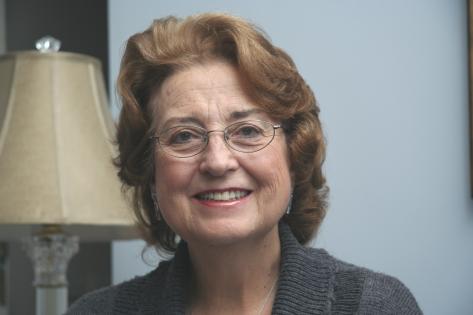
Regina Narusiene, Chairwoman of the World Lithuanian Community.
Regina Narusiene lives a busy double life. Through part of the year, she stays with husband and family in a small village 100 km. northwest of Chicago, but it’s not usual to see her for long periods at her home in Vilnius and work on behalf of ‘the international Lithuania’ – this nation outside the nation that includes about almost as many Lithuanians as the country’s resident population. Regina has been President of the World Lithuanian Community (WLC) since 2006. Before that she led the Lithuanian American Community Inc. (LAC) for six years and then was the president of the Board of Directors of that Community for another 6 years.
She is in Vilnius today, and invited me to her apartment, for an informal coffee chat about her life and observations about Lithuania and Lithuanians.
Dual citizenship. These two words have come to represent Regina's premier of the heart since she took over the leadership of WLC in 2006, the same year that Lithuania's Constitutional Court ruled that the country's Constitution had to be interpreted in such a way that individuals with citizenship of another country should not be allowed to have and keep Lithuania’s citizenship as well.
“The first few months after the court had made its terrible decision, at first I received almost 100 angry letters every day from Lithuanians and their descendants from around the world. They felt that the mother country had disowned them, cutting ties with them and that their efforts and desires to be citizens of Lithuania were not welcomed or respected. They felt that the mother country wanted to punish those who had emigrated, whether this occurred against the background of war, persecution or for economic reasons.”
Regina is herself a lawyer, with over 50 years legal practise in Illinois with her husband Bernard, litigating all types of court cases. Still, the ruling of the Lithuanian Constitutional Court has surprised her. She strongly argues that Lithuanian citizenship for those of Lithuanian descent is an inalienable constitutional birth right and that the government may not arbitrarily take it away.
"I maintain that people of Lithuanian heritage, who were born in Lithuania and have Lithuanian citizenship, have an inviolate birth right to citizenship. Lithuania cannot deprive them of this birth right. That right is guaranteed by the Constitution, but somehow that Constitutional right has been ignored. In my opinion, depriving Lithuanian citizenship to Lithuanians living abroad is against the best interests of Lithuania," she says, convinced that Lithuanians living abroad worldwide should be welcomed to participate in their motherland’s future through Lithuanian citizenship. The most valuable asset of a nation has is its people. When a substantial part of its people are rejected the nation dwindles. It self destructs.
She proceeds to tell me that the WLC laboured to supersede the decision statutorily, but that Presidents Adamkus and Grybauskaite declined to approve Parliament’s pro dual citizenship statutory enactments. Finally Lithuania did on 2 December 2010 enact a new citizenship law, which allows Lithuanians citizens and their descendants to preserve their Lithuanian citizenship if they emigrated before 11 March 1990. This new legislation prohibits dual citizenship for all those who emigrated after the reestablishment of Lithuania’s independence on 11 March1990, with the exception for those who received another country’s citizenship between January l, 2003 and November 16, 2006, the date the Constitutional Court decision became effective. The ruling is not applied retroactively, only prospectively. The new citizenship law becomes effective on 1 April 2011. The World Lithuanian Community takes the position that it is incorrect to take away the Lithuanian citizenship from Lithuanian descent people and their descendants that was acquired by birth. The Community does not support an unrestricted dual citizenship Constitutional amendment.
Behind a blue curtain
Our little coffee chat in Regina's apartment has an important and serious beginning, but I also wanted to know more about the personal life of Lithuania's international 'mom', so I ask if there is something she remembers from her childhood in Lithuania, during the early years of World War II.
On my request she tells me a dramatic childhood story, in deep emotion, but lightens up when she describes her years in America, where she was educated as a lawyer and became a successful attorney in partnership with her husband Bernard. She became active in her support for a free Lithuania early, and has been in the very forefront for political, economical, cultural, educational and social support to her home country during the last several decades.
But first her childhood story from wartime Lithuania:
“I was almost five years old, but I still clearly remember the day when a truck with Soviet soldiers drove up to the home we were hiding in Kaunas. My father ordered me to hide behind the blue curtains in the home’s living room and not make even the smallest move or sound. Our family was to be deported to Siberia and the soldiers had come to take us. It felt as though it took an eternity before my father returned and told me I could come out from my hiding place. A truck with German soldiers had come up behind the Soviet truck, forcing the Soviets to leave. That probably saved our lives. As the Soviets were returning to Lithuania in 1944 we escaped to Germany, and after living in Displaced Persons camp for 5 years, in 1949 we emigrated to the United States.”
KGB infiltrators in our US-LT societies
As the Soviets once more reoccupied Lithuania in 1944, Regina and her parents managed to get out of Lithuania. They knew that the fate awaiting them under a Soviet-controlled Lithuania would be deportation to northern Siberia's frozen tundra.
Like so many other Baltic refugees they came to eastern Germany, where they lived for a while in Dresden and were witnesses to the bombing and terrible destruction that took place during the war's final months. Regina's parents followed the war developments closely, and realized that they had to get farther west into Germany, or otherwise they risked to come under Soviet control in the part of the country that later became the DDR (East Germany). The day after the German surrender the family heading south-west. They had to walk 200 km on foot, while a smaller part of the trip took place on cattle trains. Finally they came to the city of Augsburg, north-west of Munich in the southern German region Bavaria where they stayed in a Displaced Persons camp until 1949, when a cousin in Chicago helped them to come over to the U.S.
Regina tells me that her father had a small notebook where he wrote down all the events, including the many concerns, which met the family during the escape from Lithuania until they finally were able to settle in Chicago.
"But he never told me much," she says. "Only when I got older I realized that my father was afraid of informers who could make life difficult for us, for our relatives who remained in Lithuania, and for the Lithuanian partisans who kept on fighting against the Soviet occupants well into the 1950s. The KGB had their own spies within the Lithuanian communities in the U.S., so we were extremely careful with what we said outside the home. I had, anyway, not so much to tell as my parents were very reluctant to share information with me. "
Until the 1960s, we thought we would someday return to Lithuania
Regina's new life in Chicago was similar to that of American children in general. She immediately attended high school, which was extremely difficult because she did not then posses basic English language skills. Seven years later, after acquiring a bachelor’s degree in Political Science at the University of Illinois she began to study law at the University of Illinois where she met her future husband, Bernard, and the two married in 1959. Bernard was also Lithuanian, but born in the United States. After graduation and having received their Juris doctors degrees, the two new lawyers opened their own law office. They raised three children and now have seven grandchildren.
"Through all these years, there was not a single day without us thinking of our beloved homeland - Lithuania. The very limited information coming out from the almost totally sealed Soviet Union, told us about terrible atrocities against our people. We heard vague stories about the incredibly tragic deportations of hundreds of thousands from the Baltics to Siberia, and we were told that thousands and thousands became victims of the terrorist regime that ruled our home country. It was very hard to realize that there was so little we could do, but we held together and kept the memory of Lithuania before the American people as best we could. In 1952, LAC (Lithuanian American Community Inc.) was founded, and quickly became the organization that united Lithuanians all over the United States together with a common bond. "
What a contrast it must have been between the post-war lives of the Lithuanians who managed to flee, before the borders were completely closed in 1944-45 and those who were trapped in a country that increasingly appeared as a prison it was virtually impossible to escape from alive. The only thing the Lithuanians in the U.S. could do with the tragedies that took place in their homeland was to transmit radio programmes in their native language through the station Voice of America to tell their country people that they were not forgotten and that they had to try to keep their spirits up even in those difficult times.
They did manage to convince the American government not to recognize the unlawful annexation of Lithuania into the Soviet Union. The Lithuanian Americans managed to maintain the pre-war Lithuanian Embassy in Washington and consistently advocate the Lithuanian cause.
LAC also did their utmost to lobby the U.S. authorities to pressure the Soviet Union out of Lithuania. Regina maintains that throughout the post-war period the Lithuanian-Americans kept alive the hope of a free Lithuania.
"Until the end of the 1960s we believed that Lithuania would again be a free and independent country and that we could return to. But then came the 1970s, as time went on our hopes began to fade," she admits with sorrow in her voice. She now looks out through the windows facing a Vilnius that today is free, peaceful and stunningly beautiful, but that not many years ago was eyewitness to incomprehensibly gruesome atrocities against its citizens.
The most thrilling moment of my life
The little eight year old girl who left home in a chaotic and dangerous escape from a cruel enemy in 1944, was to become a mature woman of 53 before she again could set foot on the home country's beloved soil.
In August 1989 Regina came back home, and on 23rd of August was standing in Vilnius along with tens of thousands of other Lithuanians and held hands in a 600 km long human chain that stretched from Vilnius to Tallinn. Fifty years had passed since Molotov and Ribbentrop had signed the infamous pact that was to be the beginning of a bloody and deadly hell, unprecedented in Europe's history, for a population that did not want anything but to live in peace and harmony.
"I felt the rebirth of my homeland, and when I stood there in the line with my dear countrymen to mourn all those who had been killed and tortured by a regime of madness, and heard our Lithuanian national anthem resound from the speakers around Vilnius, with hope for a new time to come. I was moved to tears more than any time earlier in my life. That moment was the most thrilling I've ever experienced. And I decided then and there to do my very best to help Lithuania to again be resurrected, and grow as a proud and strong nation." The lawyer, politician and activist who has experienced so much, and through her profession and life learned how to act professionally and balanced in all circumstances, had become clearly emotional.
President Bush Sr. at first chose a head-in-the-sand attitude
"Understandably, I was full of enthusiasm and optimism when I returned to the United States in 1989. The Lithuanian Americans quivered with excitement and jubilation, and we were soon organized to exert supportive pressure through all political, media and other channels we had access to. I think my uncle in Lithuania, having been deported to Siberia, expressed how we all felt, in one single sentence, when he said that he had been in Siberia and that he was not under any circumstances letting this chance for freedom slip by."
But the battle for secession from the Soviet Union was still not won. Gorbachev's sweet words about freedom for all the Soviet states were not truthful so all means had now to be used to ensure Lithuania's independence. The Lithuanian parliament's declaration of freedom 11 March 1990 was the first and most important step in that direction, but it was also more and more obvious that the Soviets would resist. Regina tells me that when Professor Landsbergis came to Washington 9 December 1990, he was convinced that the Soviet military would take action against Lithuania. Landsbergis met with U.S. President Bush Sr. to tell him this, but President Bush was unwilling to do anything at all at that time and went instead for a head-in-the-sand approach, telling us that the U.S. could not let the USSR fall apart, due to nuclear concerns etc.
“Fortunately however, the Baltic desk at the State Department in Washington was unwilling to accept such attitudes. We spent efforts to effectively exert pressure on all sides. Among the first things we were very pleased with was the cooperation with Iceland, which was the world’s first nation to recognize Lithuania's new independence. Tacitly the U.S. authorities supported Iceland's recognition, but they felt they couldn’t take a similar step so soon," explains Regina.
When the Soviet troops attempted to re-impose complete control of Lithuania on 13 January 1991, Regina and the Baltic organizations in the United States were quick to condemn the attack. "I hold you personally responsible, Mr. Gorbachev," she said in an interview with CNN that was carried nationwide in the United States.”
A change of mindset is necessary in today’s Lithuania
In 1994 Regina Narusiene was elected President of LAC (Lithuanian American Community Inc.). She held this position through two terms, until 2000, then she served as chairman of the LAC Board of directors for two terms until 2006, when she was elected President of the WLC (World Lithuanian Community) and now is in her second 3-year term as leader of the this 'nation outside the nation'. During the 20years that have passed since Lithuania regained its freedom, she has made tireless efforts for her homeland. She spearheaded the drive in the United States for the admission of Lithuania into NATO from January 6, 1994 until its official admission into NATO on 29 March 2004. She has served as an advisor on various matters to most of the Prime Ministers of Lithuania and extensively contributed her legal talents with respect to the printing and issuance of the Lithuanian currency - Litai. She is a founding member and continues to serve as a member of the Lithuanian Royal Palace Foundation. She feels that she has always been personally well received in Lithuania.
“Recently however, I've heard some in Lithuania say that Lithuania does not need or want our help. Still I see significant reluctance to improve the country's legal systems. It seems that some of the country's leaders simply are not ready to or interested in implementing urgently needed reforms. I am saddened to see the public’s perception that rule of law is still not working effectively in Lithuania." Regina sighs a little deflated when she shares those thoughts with me.
Towards the end of the conversation I ask her to express some thoughts on what it takes to get Lithuania to grow stronger and better over the years to come. I'll let her words finish my little report from our coffee talk:
"Let me first say that it is deeply tragic to see so many young, talented and beautiful people leave this country. Some say that it is now no longer talk of emigration, but evacuation. It is therefore obvious that much more must be done to pave the way for good jobs and opportunities for the country's younger population. But it is also my opinion that we need a shift in mindset among some of the country's leaders.”
“Last but not least, I yearn to see far more of the population, young and old, engaged in voluntary public oriented organizations and activities. That is exactly what democracy for a large part is about, and it does not take much. Lithuania's people should begin to take such initiatives themselves. A good, democratic society consists of people who give of themselves to help each other. Lithuania has unfortunately still a long way to go in this respect.”
“I will conclude by saying that it is important for the nation to maintain good relations with all Lithuanians, and their descendants, now living in other countries.”
“Lithuania needs a new global strategy, and we in the ‘Lithuanian World Community’ will do our utmost to contribute to such a strategy. Lithuania has an enormously large group of smart Lithuanians and good hearts outside the country, and it is important that Lithuania invite to dialogue with them and seek their support and input to promote a better future for Lithuania, the country we all love. "
- Bookmark :
- Digg
- del.icio.us
- Stumbleupon
- Redit it
Citizenship and loss thereof
- Posted by - (2) Comment
Text: Regina F. Narusis, J.D.
Why is Lithuanian citizenship so important to Lithuanian emigrees ? The reasons why so many emigres posses a desire to regain and to maintain citizenship status with their country of origin are many. First and foremost, citizenship is the most important real tie to their homeland , for which they continue to posses an abiding love and affection. It is a symbol, if not tangible, and marker of one‘s identity throughout the world.
Read more...- Bookmark :
- Digg
- del.icio.us
- Stumbleupon
- Redit it
The Lithuanian World Community
- Posted by - (1) Comment
The Lithuanian World Community (Lithuanian: Pasaulio lietuvių bendruomenė or PLB) is a non-governmental and non-profit organization established in 1949 that unifies Lithuanian communities abroad. The Constitution of the Lithuanian World Community declares that it consists of all Lithuanians living abroad. The Community is active in 36 countries, including representation in Lithuania. Read more...
- Bookmark :
- Digg
- del.icio.us
- Stumbleupon
- Redit it
Lithuanian footsteps in South Africa
- Posted by - (0) Comment
Text and photos: Aage Myhre
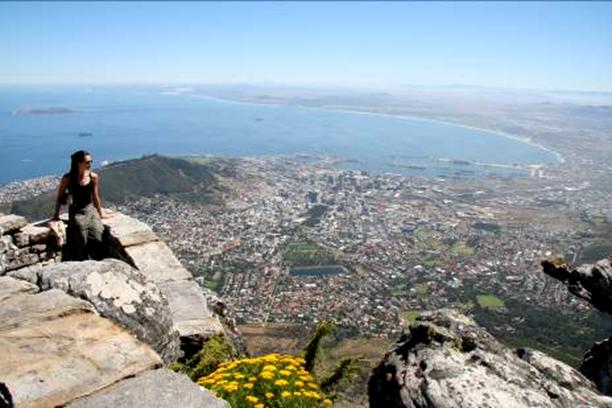
For the tens of thousands Litvaks who came to South Africa during the years 1860 – 1940, the Cape Town harbour was the first glimpse they had of their new homeland.
It is considered that around 90% of the approximately 80,000 Jews living in South Africa are of Lithuanian descent (the so-called Litvaks), which thus constitutes the largest pocket of Litvaks in the world! You are hereby invited to learn more about this unique Jewish community that still holds Lithuania alive in their hearts, museums and synagogues.
Read more...- Bookmark :
- Digg
- del.icio.us
- Stumbleupon
- Redit it
- Posted by - (0) Comment
Greetings to VilNews from the Holy Land!
Postcard from Darius Degutis, Lithuania’s Ambassador to Israel and South Africa

Lithuania and Israel are 4000 kilometers apart but this does not prevent us from enjoying and developing a strong partnership. Together, our two countries are embarking on an agenda which is directed at our future, at the opportunities that the 21st century provide to us – we are expanding our economic ties, developing cooperation in the fields of high-tech and innovations, boosting the spirit of entrepreneurship, promoting tourism.
2010 was a remarkable year for our partnership: Israeli Foreign Minister paid a first ever official visit to Lithuania, we witnessed an exchange of seven high level Governmental and Parliamentary visits, three Lithuanian business forums were held in Israel, and a number of cultural events took place. A very positive year of 2010 was crowned by the visit of the Prime Minister of Lithuania, Andrius Kubilius, the first in 16 years.
We have promising plans for 2011 as well: the visit of President Peres to Lithuania is expected, Israel’s Minister of Trade and Industry will bring to Lithuania an Israeli business mission, Lithuania will participate in an International Tourism Exhibition in Tel Aviv and in Jerusalem Book Fair, an Lithuanian IT companies are planning further expansion of their activities in Israel.
A very special place is devoted to the history of the Lithuanian Jewish community – the Litvaks. Their story covers the period of more than 600 years. Jews came to Lithuania in the 14th century and they were granted full privileges and rights by Lithuanian Grand Dukes Gediminas and Vytautas Magnus. Later in 1623 the Lithuanian state acknowledged self governed Jewish council which enabled Jewish community to carry its autonomous and fully fledged life.
President of Israel Shimon Peres once said, “you can not be Jewish unless you are Lithuanian or a Litvak as it is known in Yiddish language and Litvak is not just the name of the place, it is a unique character and a major culture”.
Vilnius was not just the main city for the Litvaks, it also served as a cultural and spiritual center for Jewish communities of the whole region. Even today we hear the echo of the wisdom of Elijah ben Shlomo or as he is widely known Gaon of Vilna (1720-1797).
Litvaks have left an important and deep footprint in the history of Lithuania. They contributed significantly to the development of culture, science, business not only in Lithuania and Israel, but in many other countries as well.
President Shimon Peres, Prime Minister Benjamin Netanyahu, Knesset Speaker Reuven Rivlin, Samuel Bak, Menachem Begin, Eliezer Ben Yehuda, Romain Gary, David Gering, Laurence Harvey, Jascha Heifetz, Grigorij Kanovich, Jacque Lipschitz, Icchokas Meras and many, many other most prominent people and outstanding personalities who are recognized and respected all over the world belong to the same family – the family of Litvaks.
But nothing brings Lithuania and Israel closer than our common passion for basketball. Sarunas Jasikevcius or Sharas as he widely is known in Israel is a true hero of our two nations. Equally loved and praised by every Lithuanian and Israeli, Sharas, by helping Maccabi team to win two European trophies, became a living legend for basketball fans all over Israel.
The European Basketball Championship of 2011 will be held in Lithuania. Shall we say that Lithuania becomes a champion by winning over Israel in the final...?
Ambassador Darius Degutis
Graduated from Vilnius University in 1986. Began his work career in the International Chamber of Commerce, Lithuania Branch. Later export Manager for the company Audėjas. Joined the Lithuanian Ministry of Foreign Affairs in 1991, Nordic countries department. Was appointed Counselor and Deputy Head of Mission to the Lithuanian Embassy in Denmark, 1992. 1998-2001: Deputy chief of mission at the Lithuanian Embassy in USA. 2001-2004: Ambassador in Poland. 2009: Appointed Ambassador of Lithuania to the states of Israel and South Africa.
D. Degutis was awarded the Order for Merits to Lithuania the Commander’s Cross.
- Bookmark :
- Digg
- del.icio.us
- Stumbleupon
- Redit it
VilNews e-magazine is published in Vilnius, Lithuania. Editor-in-Chief: Mr. Aage Myhre. Inquires to the editors: editor@VilNews.com.
Code of Ethics: See Section 2 – about VilNews. VilNews is not responsible for content on external links/web pages.
HOW TO ADVERTISE IN VILNEWS.
All content is copyrighted © 2011. UAB ‘VilNews’.

 Click on the buttons to open and read each of VilNews' 18 sub-sections
Click on the buttons to open and read each of VilNews' 18 sub-sections 







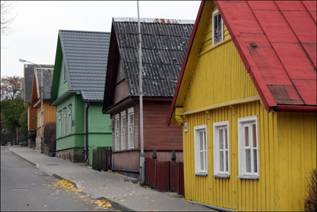
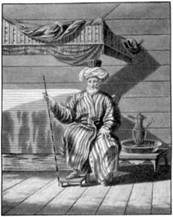
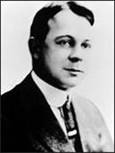
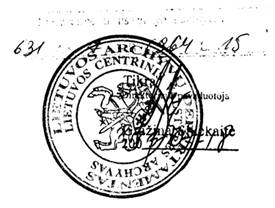

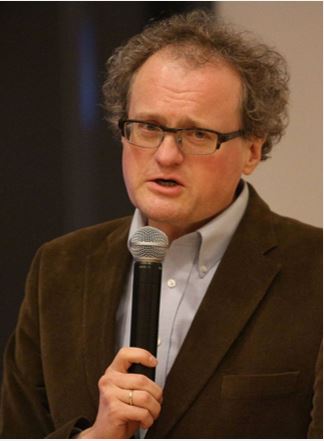
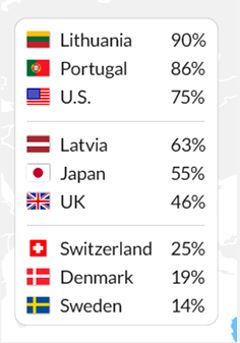
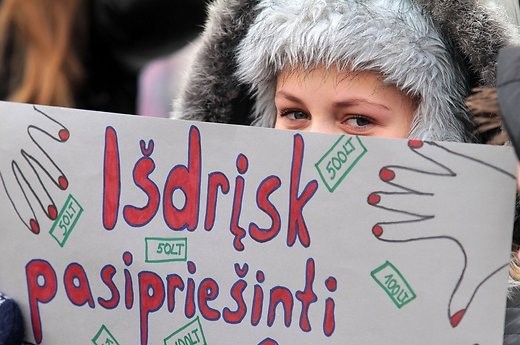
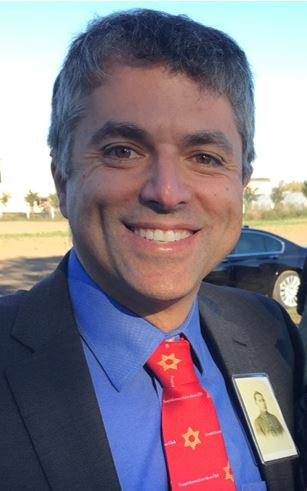

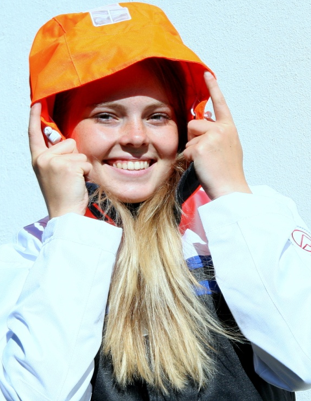
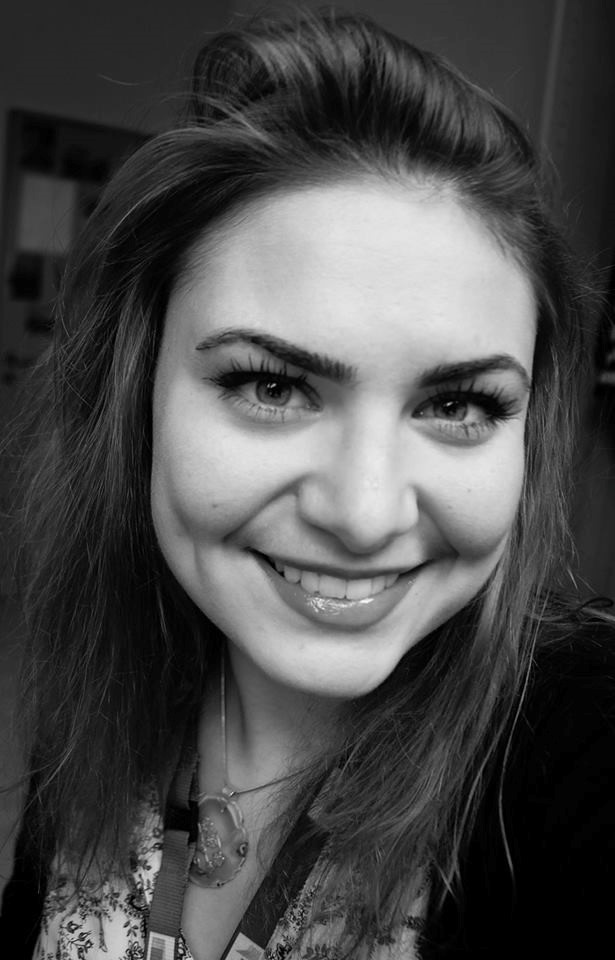
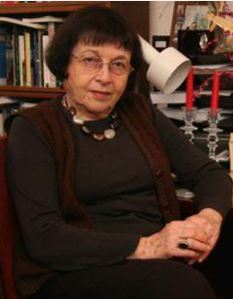
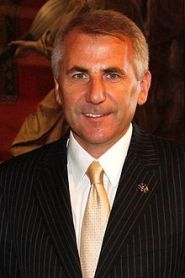
.jpg)
